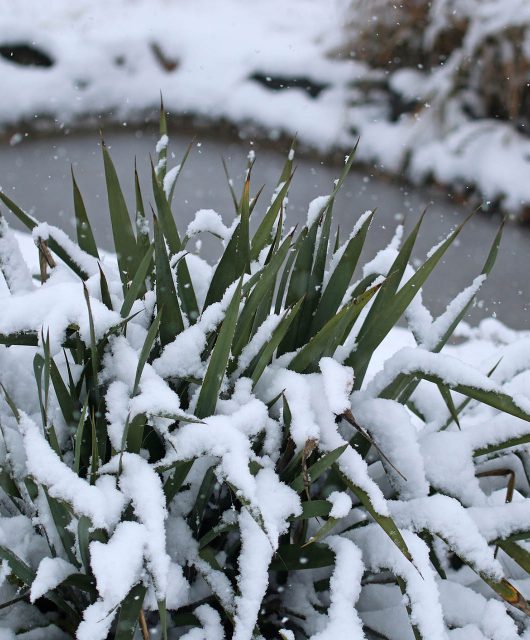Biodiversity Day is a day where we can reflect and act on the delicate web of life that surrounds us.
It is also an important day to re-affirm the commitment that you continue to make for Canadian conservation!
We have solutions to help mitigate the decline of species. We have experts on our team providing those solutions – working to halt and reverse species and habitat loss. And, we have you! The support you provide helps us face the challenges head on for wildlife and their habitat.
Here are a few plants and animals that contribute to biodiversity and pollination:
Hummingbird Moth (Hemaris spp.)
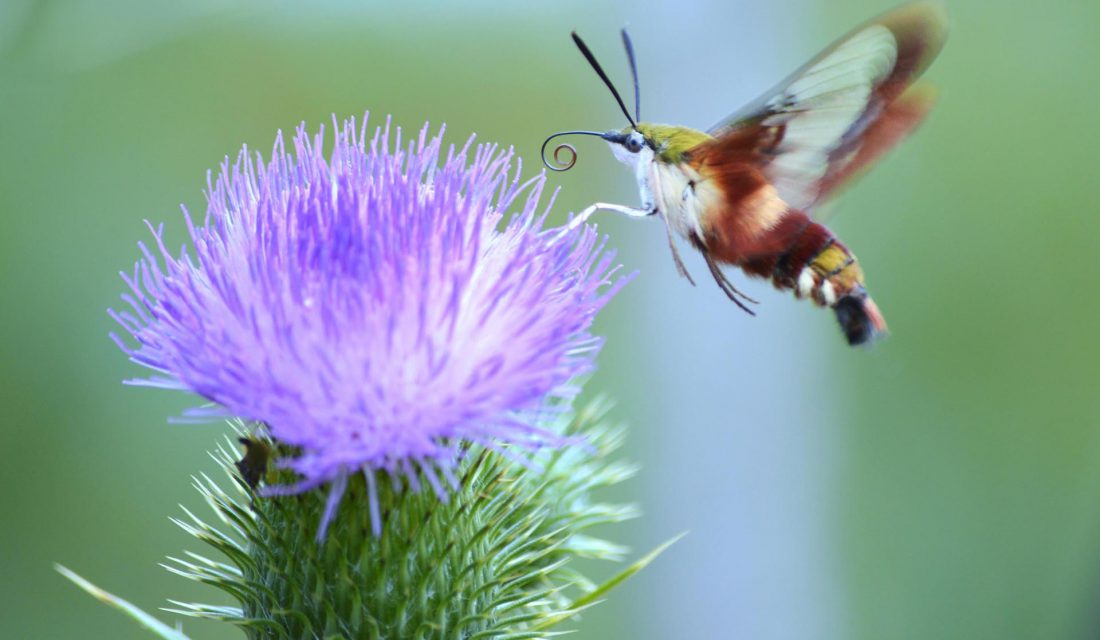
Hummingbird Moths have sections of their wings that are fully transparent. They behave similarly to hummingbirds, as their name suggests, as they feed only during the daytime and hover while they sip nectar from flowers. They can be found across most of Canada in a variety of habitats including gardens. Larvae feed on a variety of leaves, including honeysuckles, snowberries, hawthorns, cherries and plums. When ready to develop into an adult, they drop to the ground to the leaf litter below. As with so many of our butterfly and moth species, without the soft landing and shelter of leaf litter and other plant matter under the tree or shrub, the caterpillar has little chance of surviving and growing into its adult form. You can help this species and many others by leaving fallen leaves below your trees and shrubs as well as growing other plants below them, rather than a barren hard lawn. This will also benefit the tree/shrub as nature designed the leaves to retain moisture and slowly return nutrients to the roots. If you must clean up your leaves, be sure to compost them instead of throwing them away, and delay clean up until milder weather to give our butterflies and moths a chance to finish their development.
Wild Bergamot (Monarda fistulosa)
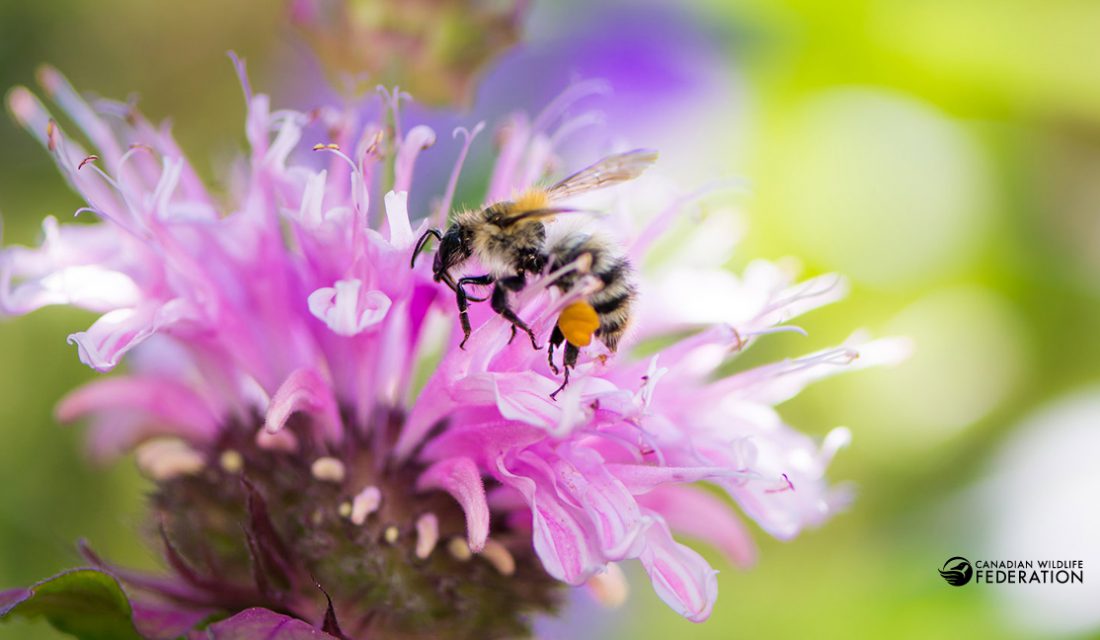 This lavender coloured flower, commonly called Wild Bergamot, is not just useful for our pollinators but also for humans. Wild Bergamot leaves are aromatic and can be used for seasoning, tea and perfume. The oil from the leaves was historically used – and is still used today – for many medicinal purposes, including treating colds, headaches, insomnia and sore throats. Wild Bergamot is a great plant for a wide variety of pollinators who visit for its nectar, including bees, wasps (the solitary non-stinging kind!), hummingbirds, butterflies and flower flies. You can find this perennial in sunny open woodlands, marshes, prairies, streambanks and roadsides.
This lavender coloured flower, commonly called Wild Bergamot, is not just useful for our pollinators but also for humans. Wild Bergamot leaves are aromatic and can be used for seasoning, tea and perfume. The oil from the leaves was historically used – and is still used today – for many medicinal purposes, including treating colds, headaches, insomnia and sore throats. Wild Bergamot is a great plant for a wide variety of pollinators who visit for its nectar, including bees, wasps (the solitary non-stinging kind!), hummingbirds, butterflies and flower flies. You can find this perennial in sunny open woodlands, marshes, prairies, streambanks and roadsides.
Monarch Butterfly (Danaus plexippus)
 The Monarch Butterfly is known for its long migration. Beginning in late summer, Monarchs west of the Rocky Mountains make their way to coastal California to overwinter, while Monarchs east of the Rockies head to central Mexico. Habitat loss is the biggest threat to Monarchs. CWF has established a rights-of-way network across eastern and southern Ontario and partnered with land managers to create meadow habitat for Monarchs and all pollinators in areas such as roadsides and hydro corridors. Our objective is to carry this initiative across the entire country to create the Canadian pollinator network. You can help fuel their journey in your own backyard by providing nectar-rich native wildflowers throughout the growing season, such as Black-eyed Susans, Joe-pye Weeds, asters and of course – Common Milkweed or one of the other milkweed species native to your area. Milkweed are the Monarch Butterfly’s only source of nourishment in their caterpillar stage.
The Monarch Butterfly is known for its long migration. Beginning in late summer, Monarchs west of the Rocky Mountains make their way to coastal California to overwinter, while Monarchs east of the Rockies head to central Mexico. Habitat loss is the biggest threat to Monarchs. CWF has established a rights-of-way network across eastern and southern Ontario and partnered with land managers to create meadow habitat for Monarchs and all pollinators in areas such as roadsides and hydro corridors. Our objective is to carry this initiative across the entire country to create the Canadian pollinator network. You can help fuel their journey in your own backyard by providing nectar-rich native wildflowers throughout the growing season, such as Black-eyed Susans, Joe-pye Weeds, asters and of course – Common Milkweed or one of the other milkweed species native to your area. Milkweed are the Monarch Butterfly’s only source of nourishment in their caterpillar stage.
Milkweed (Asclepias spp.)
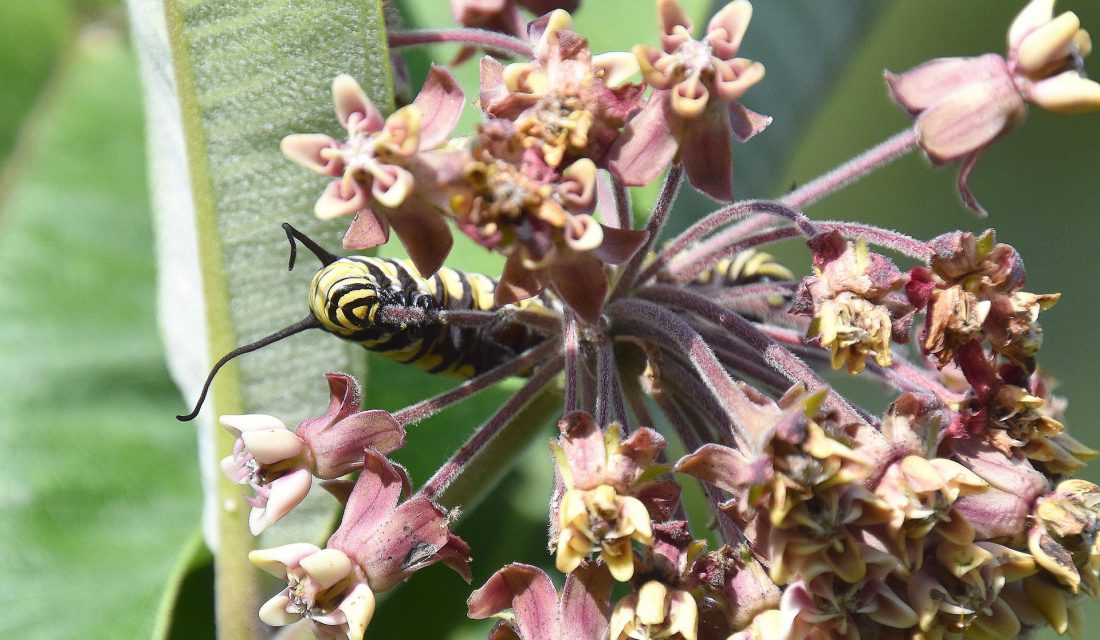 A favourite and an important plant for pollinators, milkweed can be found in all provinces across Canada, although it’s less common in Newfoundland and Labrador. These wildflowers can grow up to 1.5 metres tall and their blooms can be found in either a white/green colour, orange or a pale pink/deep magenta. They get their name from the milky sap that can be found in their leaves and stems. Monarch Butterflies, and some other insects, benefit from the bitter and poisonous compounds in the milkweed sap – it makes them distasteful to predators, who quickly learn to avoid their orange and black colours. Canada has many species of milkweed, but some can spread quickly, such as Common Milkweed and Showy Milkweed. As a result, some provinces (Manitoba and Nova Scotia) do not allow planting of these species, to varying degrees. If you are planning to grow milkweed in your garden, you can keep these plants from over-spreading by snipping the flower heads before they begin to seed and by planting a plastic barrier around the roots. Milkweeds are useful to us, too! The silky fluff attached to the seeds is very light, buoyant and warm. It has many uses, including insulation in winter jackets and stuffing in lifejackets, and is currently being researched as a way to reduce sound and weight in cars and ambulances. The silk is absorbent to oil but not water, making it an efficient and natural way to address oil spills. Indigenous Peoples have used milkweed for making rope and bowstrings, as well as medicinally for treating infections, warts and other ailments.
A favourite and an important plant for pollinators, milkweed can be found in all provinces across Canada, although it’s less common in Newfoundland and Labrador. These wildflowers can grow up to 1.5 metres tall and their blooms can be found in either a white/green colour, orange or a pale pink/deep magenta. They get their name from the milky sap that can be found in their leaves and stems. Monarch Butterflies, and some other insects, benefit from the bitter and poisonous compounds in the milkweed sap – it makes them distasteful to predators, who quickly learn to avoid their orange and black colours. Canada has many species of milkweed, but some can spread quickly, such as Common Milkweed and Showy Milkweed. As a result, some provinces (Manitoba and Nova Scotia) do not allow planting of these species, to varying degrees. If you are planning to grow milkweed in your garden, you can keep these plants from over-spreading by snipping the flower heads before they begin to seed and by planting a plastic barrier around the roots. Milkweeds are useful to us, too! The silky fluff attached to the seeds is very light, buoyant and warm. It has many uses, including insulation in winter jackets and stuffing in lifejackets, and is currently being researched as a way to reduce sound and weight in cars and ambulances. The silk is absorbent to oil but not water, making it an efficient and natural way to address oil spills. Indigenous Peoples have used milkweed for making rope and bowstrings, as well as medicinally for treating infections, warts and other ailments.
Canada’s Tiger Swallowtail (Papilio spp.)
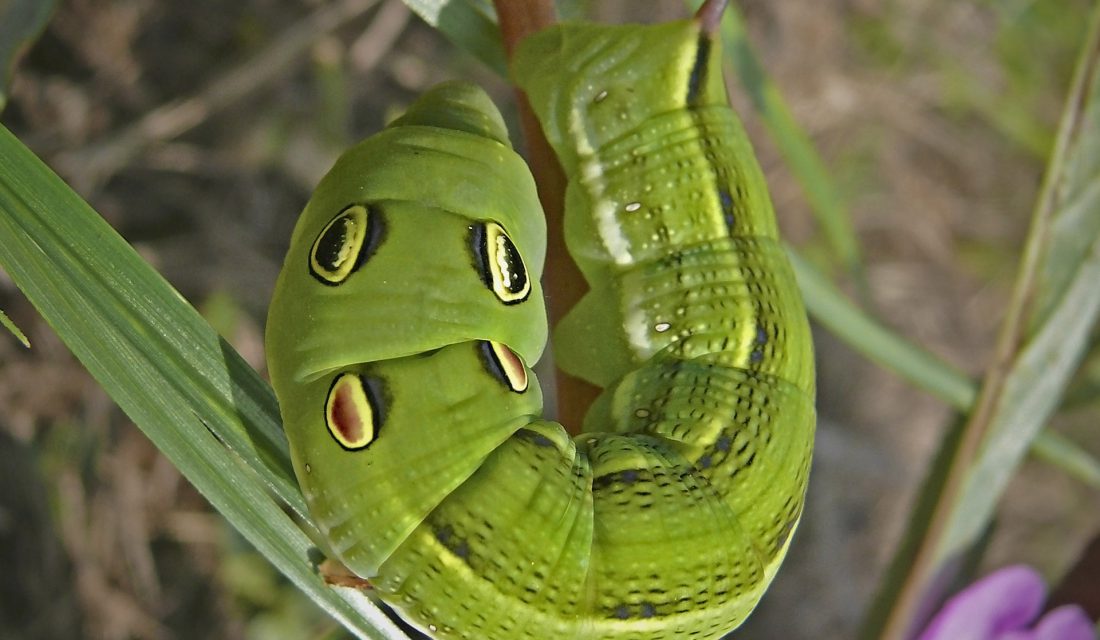
Tiger Swallowtails are well-known butterflies due to their large size and yellow and black tiger-striped wings. They get their name from the “tails” on their hind wings, which look like a swallow’s tail. Their diet consists of nectar from a variety of flowers, but they also require minerals, which they get from damp sand, compost and even manure – a behaviour known as mud puddling. To get their nectar and other nutrients, they use a tube-like mouthpart, called a proboscis, which is coiled up between feedings. You can support this butterfly by planting a variety of flowering plants, such as lilacs, asters, phlox and Echinacea. Their caterpillars feed on willows, cherries, poplars and birches.
Joe-pye Weed (Eutrochium spp.)
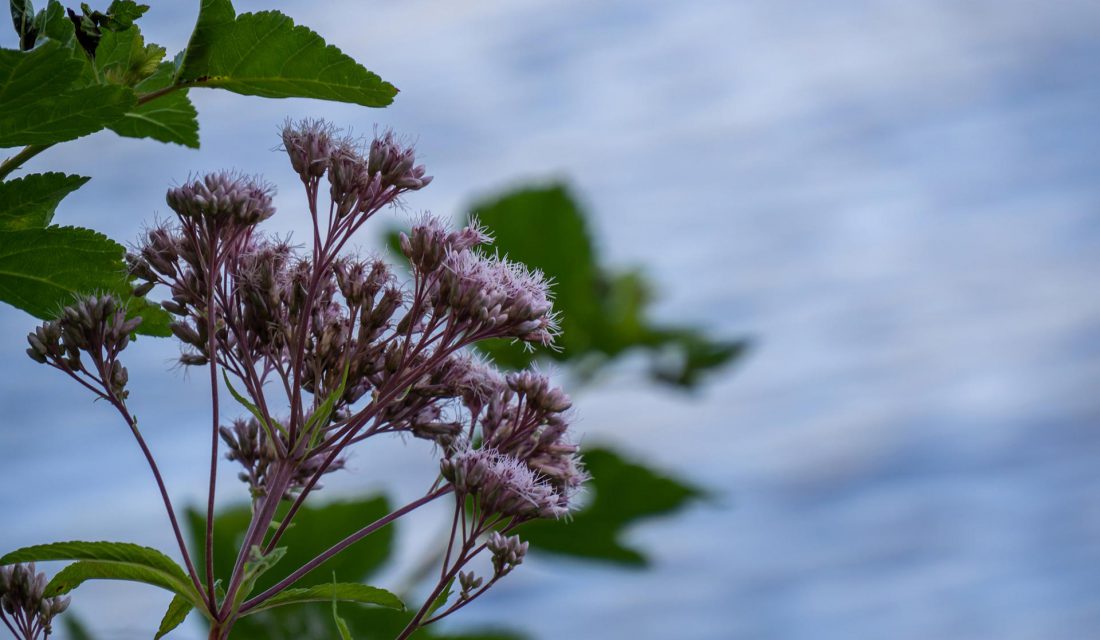 Joe-pye weed can be found throughout most of Canada and can grow anywhere from around 0.6 to two metres tall. Beginning its bloom in midsummer and lasting to early fall, it is a big attraction to many of Canada’s pollinators. You can find it in many different places out in the wild, such as swamps, bogs, meadows, ponds, forest openings and at the edges of slow-moving streams. You can help our pollinators by growing Joe-pye weed in your garden. With its height, it can be used as an attractive backdrop in a flower bed or, if you have a larger property, as part of a damp meadow or an area near a stream. Help keep its roots moist with a natural mulch, which will also keep weeds down and help roots maintain an even temperature in the heat of summer.
Joe-pye weed can be found throughout most of Canada and can grow anywhere from around 0.6 to two metres tall. Beginning its bloom in midsummer and lasting to early fall, it is a big attraction to many of Canada’s pollinators. You can find it in many different places out in the wild, such as swamps, bogs, meadows, ponds, forest openings and at the edges of slow-moving streams. You can help our pollinators by growing Joe-pye weed in your garden. With its height, it can be used as an attractive backdrop in a flower bed or, if you have a larger property, as part of a damp meadow or an area near a stream. Help keep its roots moist with a natural mulch, which will also keep weeds down and help roots maintain an even temperature in the heat of summer.
Yellow-banded Bumble Bee (Bombus terricola)

Found throughout most of Canada, the Yellow-banded Bumble Bee can be distinguished by the banded yellow and black colours across its abdomen. Bumble bees can raise their body temperature when the weather turns colder by quickly vibrating their flight muscles. While most flowers release pollen easily, some require what is known as buzz pollination. This is when bumble bees vibrate their flight muscles to help the flower release its pollen. Some plants that use this form of pollination include blueberries, tomatoes and eggplants. Listed as Special Concern on Canada’s Species at Risk Act, the Yellow-banded Bumble Bee was once considered one of the most common species of bumble bee in its Canadian range. Recently, however, it has declined by approximately 34 per cent in some areas of southern Canada. In addition to plants that bloom in the summer and fall, include early spring nectar and pollen plants for waking queen bumble bees such as native willows. Our native maples, dogwoods, serviceberries, cherries and plums are also very important spring plants for bees in general.
Fireweed (Chamerion angustifolium)
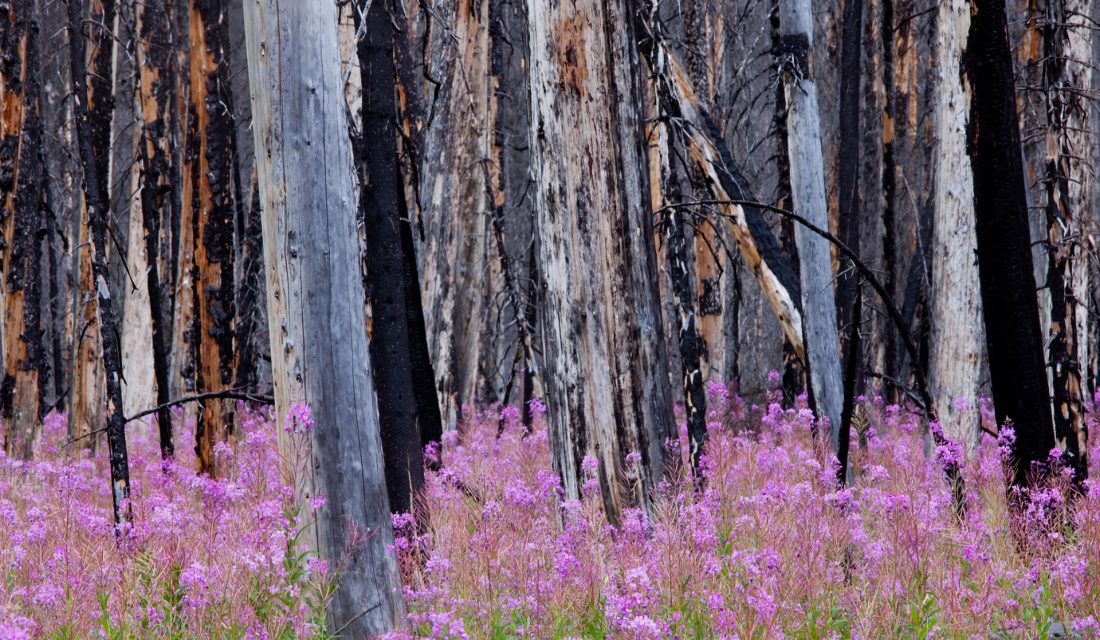 This perennial is beneficial to many pollinators and is Yukon’s floral emblem. It gets its name due to how quickly it flourishes after forest fires. When a fire clears the land, the seeds in the ground recycle the leftover nutrients, and the flowers grow and bloom as long as there is plenty of open space and sunlight. One Fireweed plant can produce up to 80,000 seeds, so if you grow it at home, take care to avoid spreading by snipping the flower head after it has been pollinated but before it sets seed. Fireweed also spreads by rhizomes so place a barrier around the roots.
This perennial is beneficial to many pollinators and is Yukon’s floral emblem. It gets its name due to how quickly it flourishes after forest fires. When a fire clears the land, the seeds in the ground recycle the leftover nutrients, and the flowers grow and bloom as long as there is plenty of open space and sunlight. One Fireweed plant can produce up to 80,000 seeds, so if you grow it at home, take care to avoid spreading by snipping the flower head after it has been pollinated but before it sets seed. Fireweed also spreads by rhizomes so place a barrier around the roots.
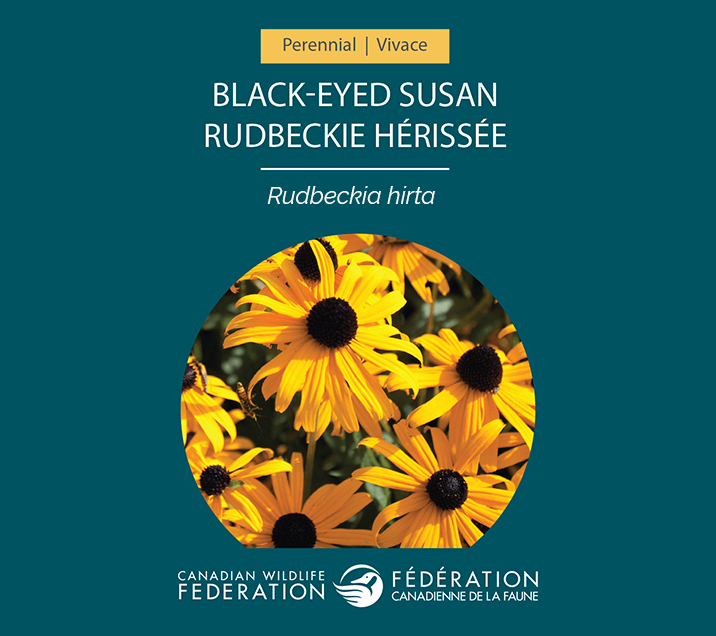 This month, we’d like to offer you a free pollinator-friendly seed packet for you to enhance your own garden with habitat to attract more pollinators. You will be helping to expand our efforts to ensure their future. Request your free seed pack!>
This month, we’d like to offer you a free pollinator-friendly seed packet for you to enhance your own garden with habitat to attract more pollinators. You will be helping to expand our efforts to ensure their future. Request your free seed pack!>
The actions you take today will be felt tomorrow and the day after that, by the wildlife and habitat we are working to conserve.


